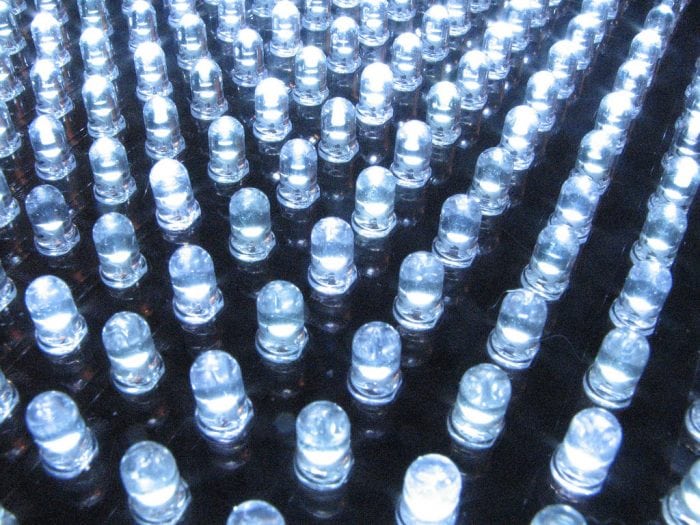
Triboelectricity, one of the most frequent experiences in our everyday life, is a contact-induced electrification in which two surfaces are electrically charged when they are contacted and separated. In combination of the triboelectric effect and electrostatic induction, triboelectric energy generator (TEG) has been investigated to convert small and irregular mechanical energy into electrical power.
TEG has unique advantages over other energy harvesting approaches, including a high power conversion efficiency, large power density, low manufacturing cost, lightweight, and a wide choice of materials. Remarkable progress has been made in TEG during the last five years. Currently, with a palm-size TEG, it is possible to light up hundreds of light-emitting diodes (LEDs) and charge a small Li-ion battery. With the emerging need for stretchable and wearable electronics, manufacturing soft deformable electronic devices fabricated on rubber substrates has been taking an intensive interest. Compared to other energy harvesting approaches such as solar cells, thermoelectric and piezoelectric devices, TEG is more suitable to fabricate deformable energy generators so that TEG can convert the irregular body motions to electricity.
Many researchers have attempted a variety of methods to increase the electric power obtained by TEG. Their main interest has been how to increase the number of surface charges generated by the contacts. However, the electricity harvested by TEG is not obtained from the generated surface charges, but from the induced charges in the collecting electrodes, therefore making the generated surface charges induced effectively in the electrode is also important for harvesting large electric power. Unfortunately, so far, the researchers studying TEG have overlooked the importance of the electrostatic induction.
In the latest work, Unyong Jeong and his colleagues at Pohang University of Science and Technology (POSTECH) investigated on effective electrostatic charge induction in TEG. They revealed that the electrostatic surface charges drift to the electrode by the electric field and combine with the induced opposite charges at the electrode. The surface charges disappear by this combination, hence the maximum electric power becomes much less than expected and charging to a capacitor is slow. Their study indicates that blocking the charge combination is essential for efficient energy harvesting. They presented a simple and effective way which not only significantly improves the TEG output power, but also provides the TEG with a large stretchability.
The idea of this article was to add a stretchable insulating polymer interlayer between the triboelectric contact surface and the electrode. They used a polydimenthylsiloxane (PDMS) silicone rubber as the interlayer. According to their calculations based on the theoretical models, the PDMS interlayer has a high density of deep-energy charge traps compared to the poly(vinylidene fluoride) (PVDF) and nylon 6 contact layers. The deep charge traps in the thin PDMS interlayer effectively deterred the charge combination and increased the absolute surface potential of the triboelectric surfaces by conserving the charges for a long period of time.
As a result, simply adding the PDMS interlayer greatly enhanced the output power density of TEGs (20.8 W/m2 by gentle tapping), which is a 173-fold increase compared to TEGs without the interlayer. By taking advantage of the elastic character of the PDMS interlayer, this study demonstrates a high-performance stretchable TEG showing a stable performance at 50% elongation during repeated stretch cycles. The stretchable TEG lights up 80 commercial LEDs when gently tapped by a finger. The results of this study provide scientific insights to material design for achieving high-performance stretchable self-powered electronic systems.
These findings are described in the article entitled Adding a stretchable deep-trap interlayer for high-performance stretchable triboelectric nanogenerators, recently published in the journal Nano Energy. The corresponding author is Prof. Unyong Jeong at Pohang University of Science and Technology (POSTCH), Korea. Dong Wook Kim at POSTECH is the first author of this work.









